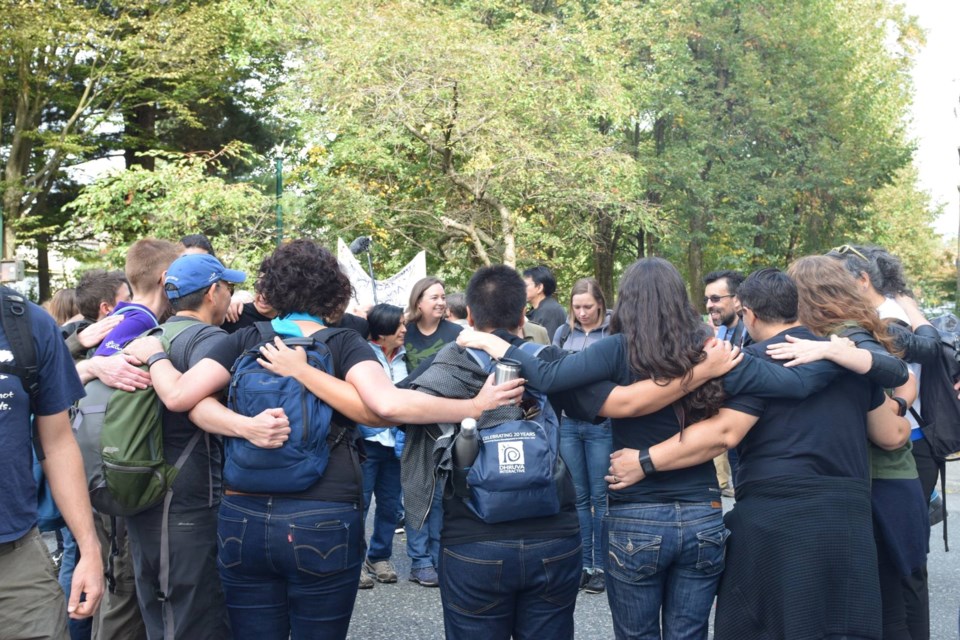The first time I met Chief Robert Joseph was in early 2003. I was working on Vancouver Island on a project to return control of indigenous child and family services to indigenous communities and he was present at a meeting where discussed the legacies of residential school and intergenerational trauma. He told his own story, as he has done countless times over the years, in his quiet and powerful voice, the very measure of dignity and compassion. I have often thought of him as Canada’s Desmond Tutu.
His dream has been to make reconciliation a reality in Canada. It is an ambitious dream. It requires individuals and institutions to recognize the reality of both historical injustices and the present day systems and structures that perpetuate colonization in indigenous communities. It is not a single activity with a fixed end, but a choice of how to address the future, a chance to begin a new chapter in the history of this continent, one that takes us in a new direction.
Such a move requires governments and social institutions to act to protect Aboriginal rights and provide restitution for the loss of lands and cultural genocide that has been a part of Canadian history. It also requires individual Canadians to act and at the very least recognize that being a Canadian citizen means you are a treaty beneficiary: your ability to own land, use public spaces and make a living from public resources is a direct result of treaties that established Canada’s system of law and land tenure, regardless of whether you live on un-ceded land or not.
It can be bewildering to know what to do and how to take action as a Canadian settler to further reconciliation. Last Sunday, however, 50,000 people gathered in downtown Vancouver to do one simple thing: walk together.
Walking together is a powerful symbolic act. It requires and individual to take action in order to be a part of something bigger. It reminds us of the long walks that indigenous children made when the escaped residential school and it reminds us of the distances we have to cover to come to a new era of relationship in Canada’s history. We walked down Georgia Street, named for King George III who first entrenched Aboriginal rights into common law in 1763 with a Royal Proclomation. We ended in Strathcona Park, named for Donald Smith, the Baron Strathcona, who built railways across the country on expropriated and in many cases, illegally obtained lands. Our walk knitted together these extremes of history and was a small act of what Chief Joseph referred to as Namwayut: a Kwa’kwa’la word meaning “We are one with others.”
Walking together does not make us reconciled. The Reconciliation Walk was, for me, a reminder of how much further we all need to go in committing to a future in which Canada acknowledges and affirms the rights and title of indigenous nations over their lands and resources, and the jurisdiction over their children and communities. There is no reason this has to be slow work. A country that embraces reconciliation is a country that will benefit everyone.
Our challenge now is for each of us to find ways to support indigenous aspirations to prosperity, dignity and freedom. It is to support healing, the resurgence of language and culture and the proper relationship between Canada and it’s host nations. Walking is one small symbolic act, but it is one that opens eyes, creates love and support and acknowledges the importance of the time and the imperative for action. You help when you donate to a language program, when you acknowledge traditional territory, when you write your MP to support justice for murdered and missing indigenous women. You help when you stand by people suffering the devastation of their lands and lives for rapacious greed and the economic gain of a few. You help when you counter racism with facts and when you remember that we are all treaty people, with benefits and obligations that we enjoy and must take responsibility for.
The greater invitation of this weekend’s walk was an extended call for all Canadians to figure out how do more than they are already doing. It is indeed up to government to honour the TRC’s recommendations, but it is up to each of us to hold our governments accountable for doing so and to remember that we are indeed one with others: Namwayut.



